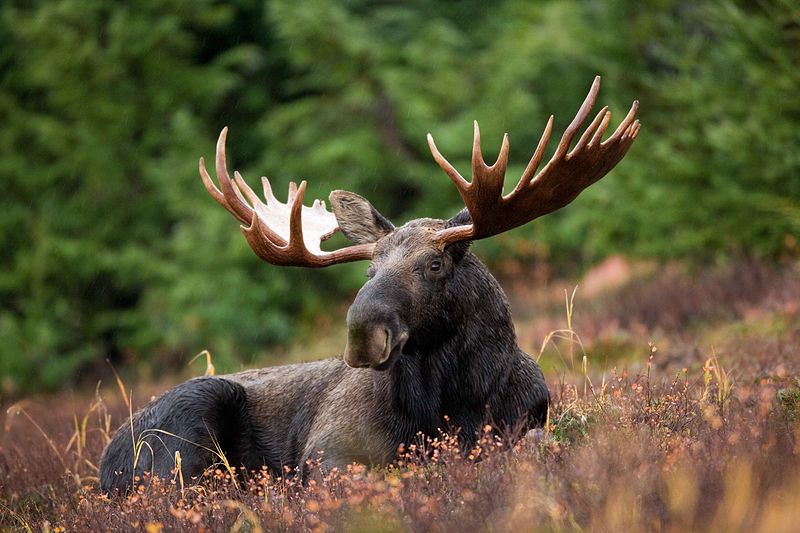
Difference Between Elk and Moose
Females or cows are slightly smaller but still exhibit considerable strength and grace. One notable feature that differentiates elk from other deer species is their antlers. Elk possess large antlers and branching with multiple tines or points extending outwards from a central beam.

Elk vs Moose Comparison Size, Habitat, Meat & Main Differences
Group of Elk Elk and moose have similar tracks, but moose have a more hearted-shaped hooves and elk have a more tooth-shaped track. Furthermore, because moose are heavier, their prints are deeper. The noses of both moose and elk are different as well…moose are more rounded, elk are have more pointed noses.

The Difference between Moose and Elk Bear Witness Safari Tours
Main Differences between Elk and Moose Elk is comparatively smaller while moose is comparatively larger in body size. The neck of the elk is dark brown than the rest of the body while the moose has the same color on the neck and the rest parts of the body. Elk has a slender and pointed snout while moose has a large and bulbous snout.
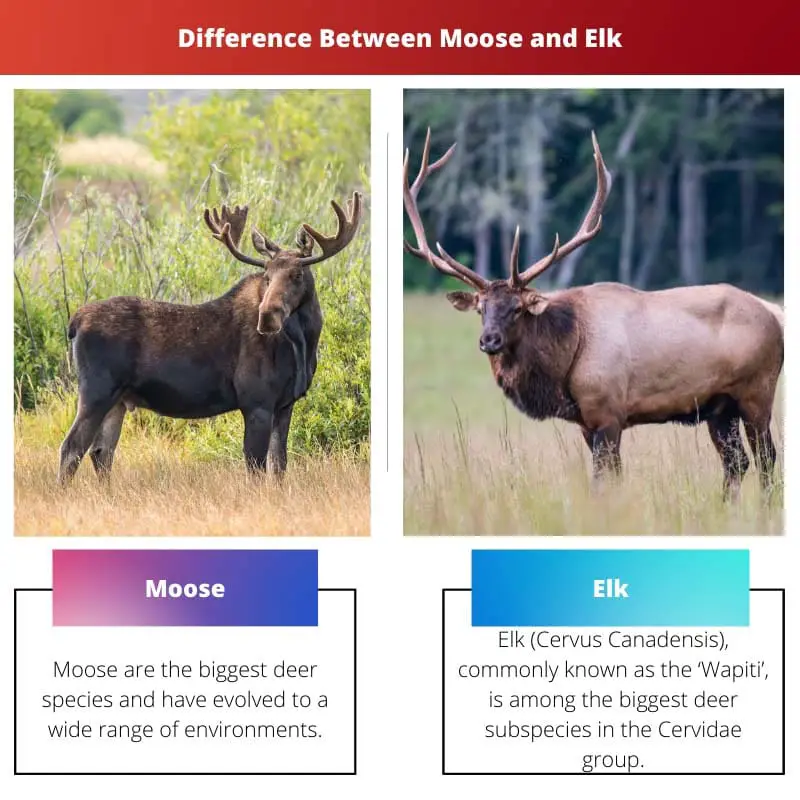
Moose vs Elk Difference and Comparison
All Animals Mammals Moose Moose vs Elk: 5 Key Differences Explained Advertisement Moose and elk are both large mammals from the deer family. Given how similar they are it's really easy for the two to be confused, and more often than not it's moose that are mistaken for elk.

Elk vs Moose Which Is Bigger, How Can You Tell a Difference?
Physical Features An elk is a large animal with a reddish hue to its hair while the moose is much larger than an adult elk and has a darker brown coat which almost appears black. The moose has a long bulbous nose with a 'bell' under the throat while the elk has a narrower snout with no 'bell' under the throat.
Elk vs Moose, Differences, How to Tell, a Quick Guide
Quick View A Table for Reindeer VS Deer VS Moose VS Elk The Unique Characteristics Of Reindeer Reindeer: Arctic Marvels And Christmas Icons Overview Of Reindeer As A Species Distinctive Features And Adaptations Of Reindeer Natural Habitat And Geographical Distribution Of Reindeer Role Of Reindeer In Indigenous Cultures
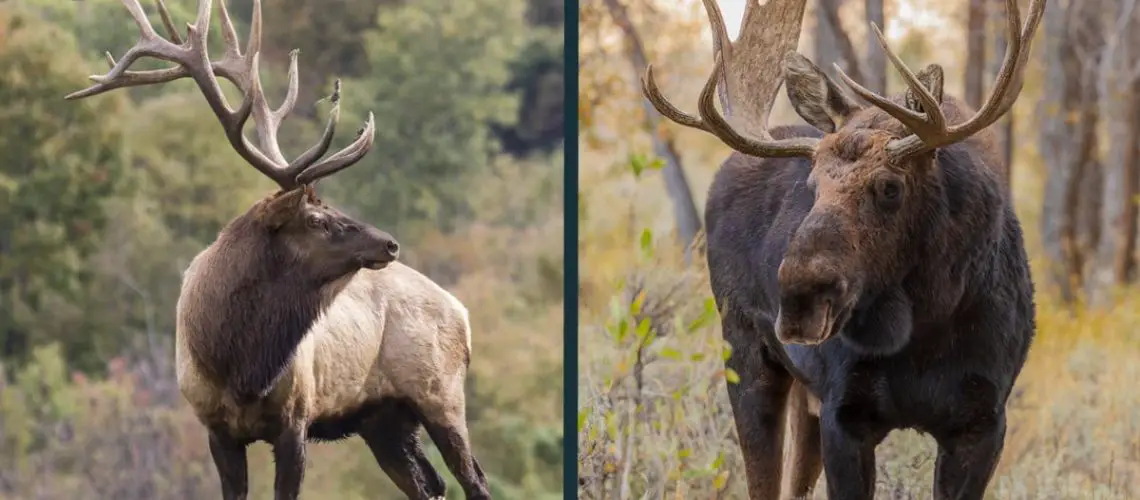
Elk vs Moose Comparison (what are the differences?) World Deer
9. Dietarily, both moose and elk are herbivores. Moose primarily feed on aquatic vegetation, shrubs, and young trees. Elk, however, primarily graze on grasses, but they also consume shrubs and trees. Their feeding habits can vary based on the season and the availability of food. Fiza Rafique.

Is an Elk and a Moose The Same? Difference Between Moose and Elk YouTube
Moose are significantly larger than elk, typically weighing up to 1800 pounds compared to elk who weigh up to 700 pounds. Moose also have a much broader body, with a longer and wider head, larger snout and a concave-shaped face. Additionally, moose have a characteristic flap of skin, known as a bell, that hangs from their neck.

Elk Vs Moose How To Tell, Differences, A Quick Guide
One of the most noticeable differences between elk and moose is their size; elk are significantly smaller than moose, weighing around 450-700 pounds, while moose can weigh upwards of 1500 pounds. Moose are the largest member of the deer family, while elk are more closely related to goats and sheep.
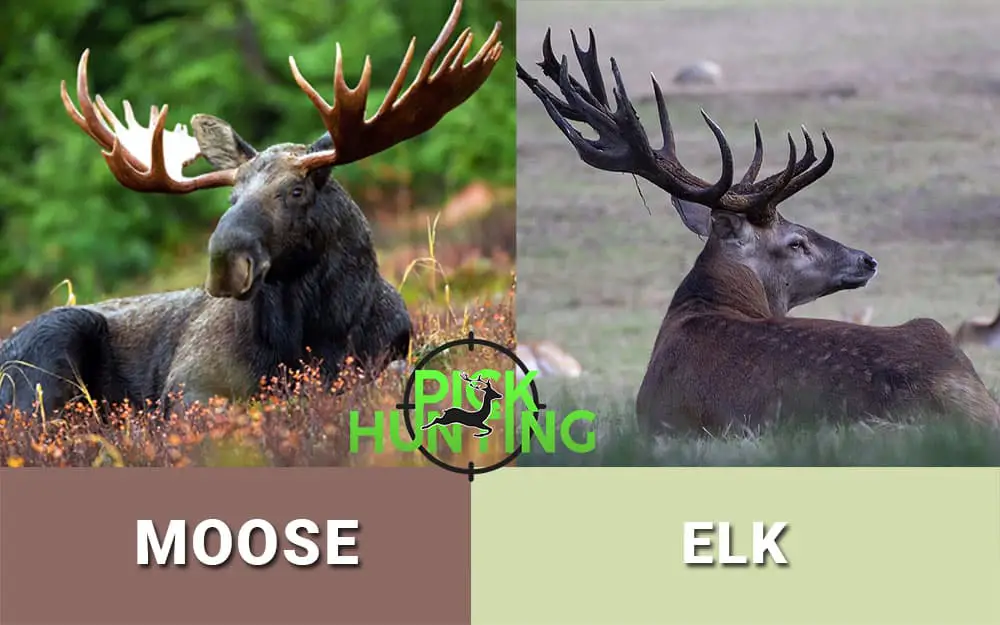
Moose Vs Elk Key Differences Between Moose And Elk
Size: Moose has a height of 4 to 5 feet at the shoulder and weigh between 485 to 730 pounds, while Elk have a height of 5 to 7 feet at the shoulder and weigh 840 to 1,550 pounds. Habitat: Moose occupy forests, forest edges, and meadows, while Elk are commonly found near rivers and lakes with abundant aquatic vegetation.

14 Structural Difference Between Elk and Moose with Similarities
2 Definitions 3 Comparison Summary Table Definitions A moose The moose is the largest deer species in the world. It can easily be identified by its flat, wide antlers and bulky face. Moose can be found in Canada, Alaska, across parts of the lower 48 in the US, and in the coldest regions in Europe.
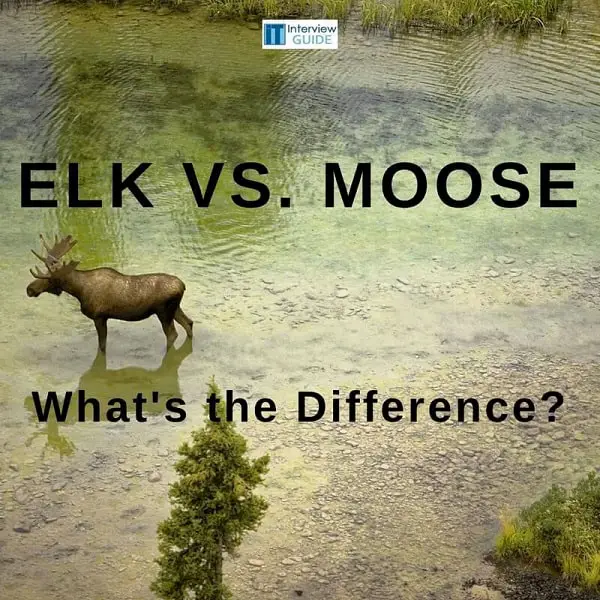
Elk vs. Moose Is There a Difference? IT Interview Guide
Moose have large and flat antlers that can span 6ft between the tips whereas, elk have elongated and branched antlers. Also, moose are generally larger than elks. Moose are larger than elks. The adult moose can grow up to 6.5ft tall (from hooves to shoulders) while weighing more than 300kg. Elks are usually 5ft tall and weigh less than 300kg.
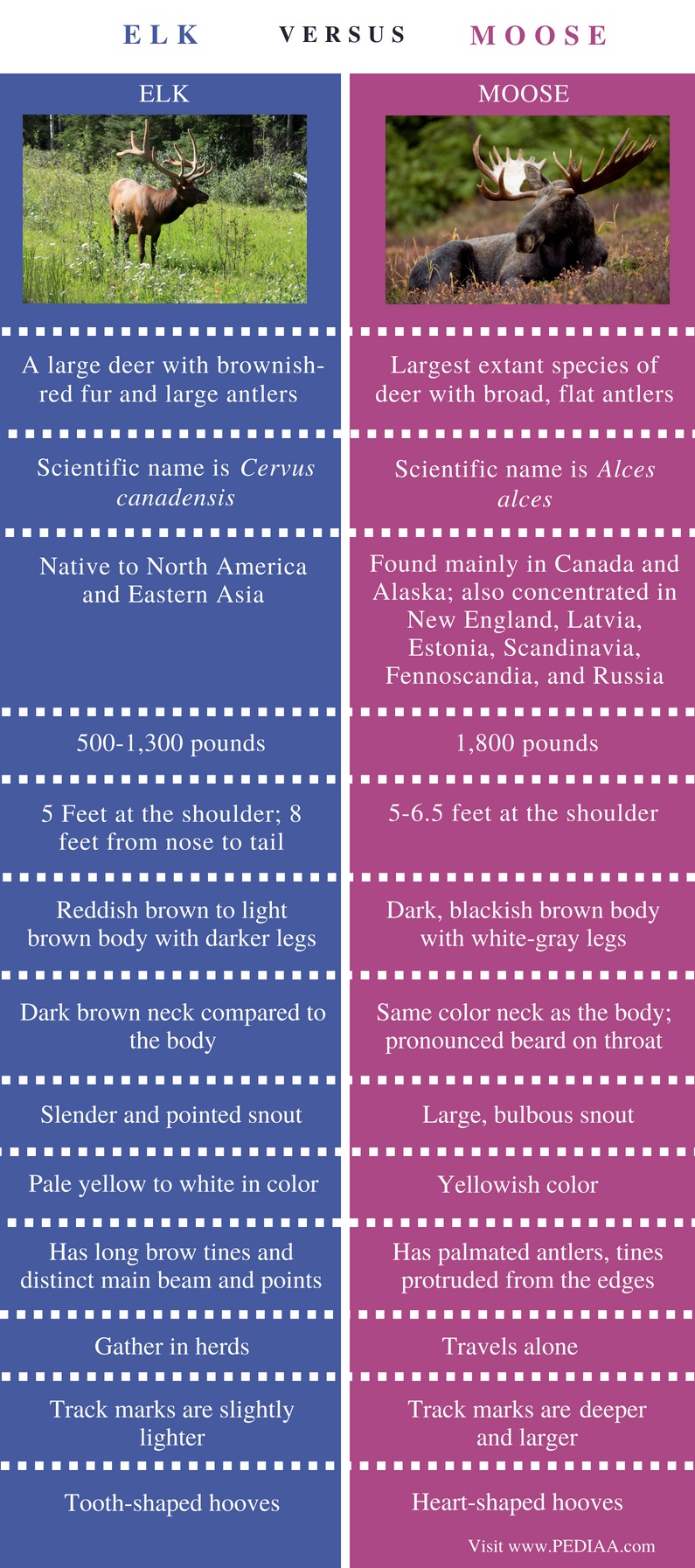
Difference Between Elk and Moose
Body Shape Color and Fur Elk vs. Moose: Habitat Differences Geographical Distribution Preferred Environment Elk vs. Moose: Behavioral Differences Social Behavior Feeding Habits Mating Rituals Elk vs. Moose: Survival Strategies Predators and Threats Adaptations
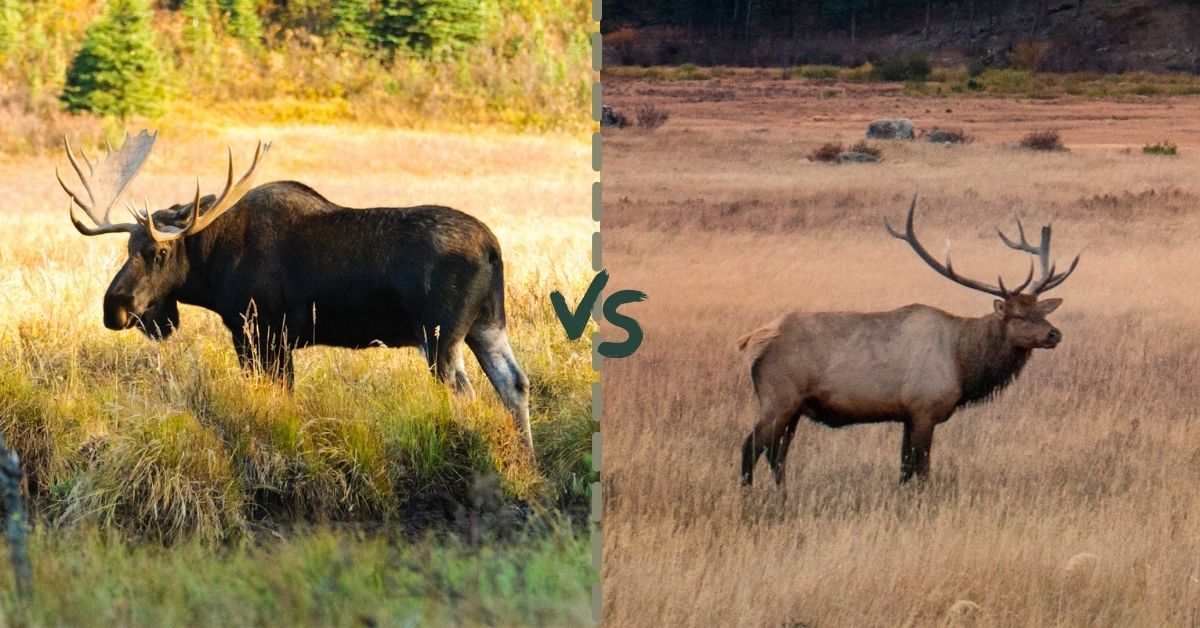
Are Moose and Elk the Same?
Moose have a bulbous nose with skin hanging from the chin while elk have a thin snout. Elk likes to stay in herds while moose prefer staying alone. Moose are good swimmers and can stay underwater for up to 30 seconds while elk can't. Heroic! Amazingly, elk can run faster than moose but moose is not slow either.

Elk vs Moose Key Differences, Size Comparison, and Habitat
- World Deer Elk vs Moose Comparison The moose and the North American elk (Wapiti) have similarities. After all, they're both large Cervids. Yet there are many differences between these two animals. We will discuss the differences between North American elk and moose.

14 Structural Difference Between Elk and Moose with Similarities
Moose have a more horse-shaped nose and skin under the neck, elks have slender snouts. Elks live in groups and avoid humans, moose are solitary animals, unafraid of humans. Here's a graphic representation of both elk vs moose, so you can see the visual differences, including average height (male and female) and average length…